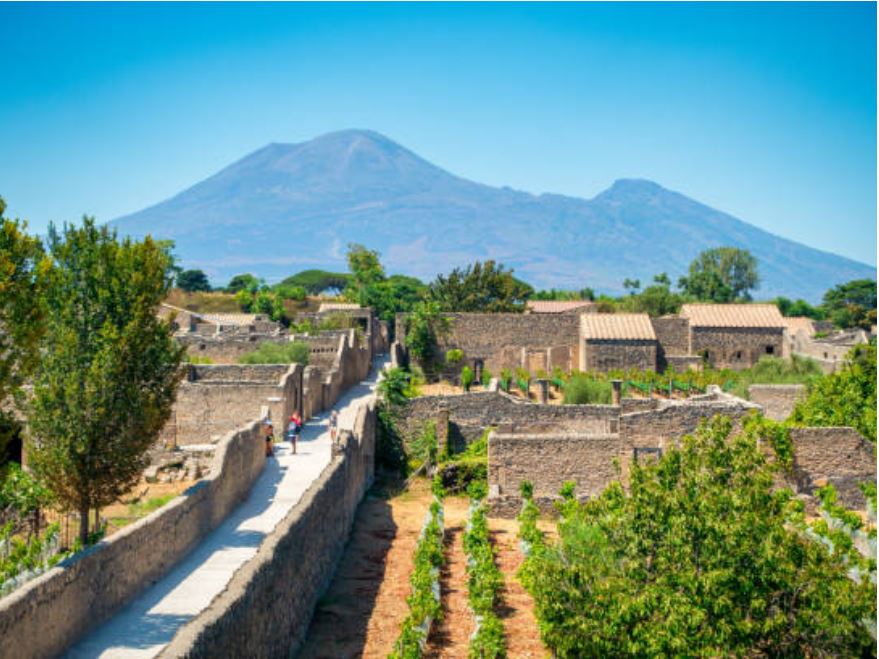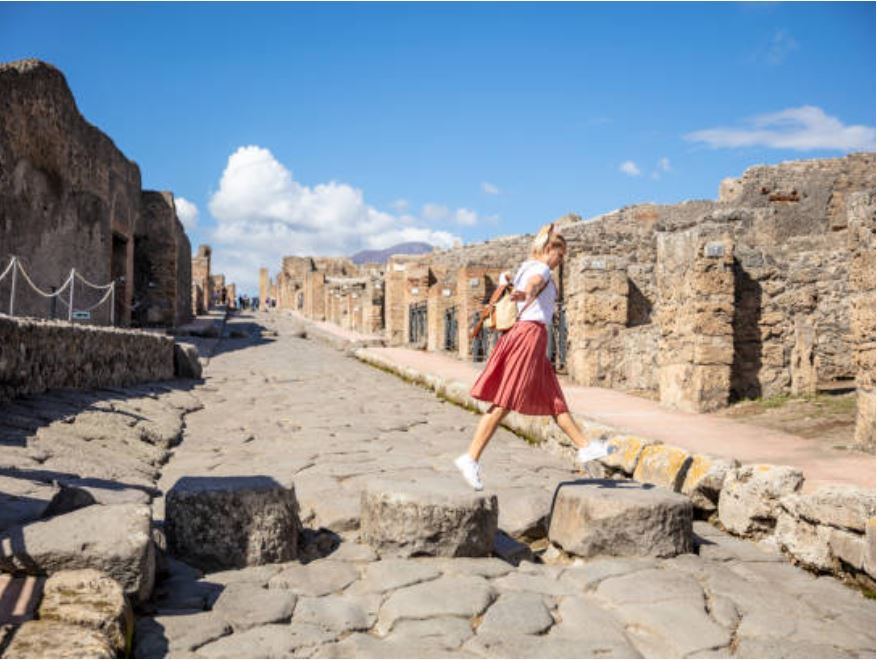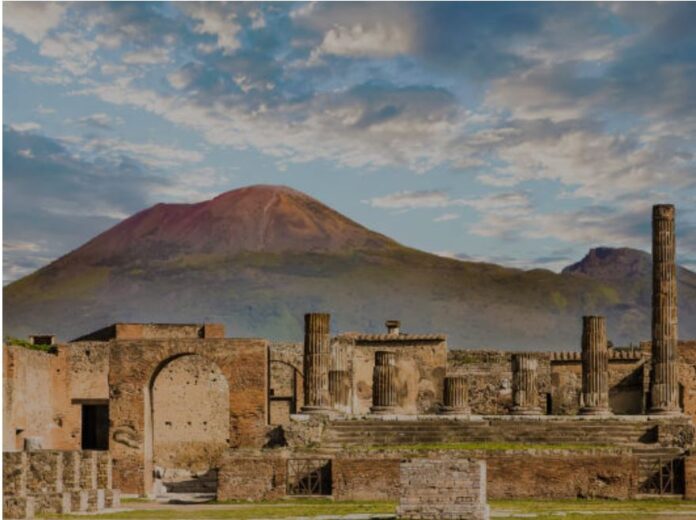Nestled in the shadow of Mount Vesuvius, the ancient city of Pompeii stands frozen in time, an archaeological marvel that unveils the daily life and culture of the Roman Empire. The eruption of Mount Vesuvius in 79 AD was a catastrophic event that obliterated the city, but paradoxically, it also preserved it in a remarkable state. As we wander through the cobbled streets and peer into the intricacies of the preserved buildings, we gain profound insights into the lives of the ancient Romans. In this blog post, we’ll delve into the captivating story of Pompeii, exploring how the city’s demise became a key to unlocking the mysteries of Roman civilization.
Page Contents
A Moment in Time: The Catastrophic Eruption
The story begins on that fateful day in 79 AD when Mount Vesuvius erupted, spewing ash, pumice, and molten rock over the prosperous city of Pompeii. The eruption was so sudden and intense that the inhabitants had little time to flee, and the city was buried under layers of volcanic debris. However, this catastrophe inadvertently became a time capsule, encapsulating the city in a cocoon of ash that would preserve it for centuries.
Read also : The Terracotta Army: Guardians of Qin Shi Huang’s Tomb
Unveiling Pompeii’s Secrets
The rediscovery of Pompeii in the 18th century was akin to opening a time capsule that had been sealed for over a millennium. Excavations revealed remarkably well-preserved structures, artifacts, and even the remains of its citizens. The level of preservation was so astounding that it allowed archaeologists to piece together a vivid tapestry of daily life in ancient Rome.

The Resilience of Roman Architecture
One of the most striking aspects of Pompeii is the resilience of Roman architecture. The city’s buildings, despite the passage of centuries, stand as testaments to the engineering prowess of the ancient Romans. From the grandeur of the amphitheater to the intimacy of the homes with their atriums and frescoes, Pompeii showcases the diversity and sophistication of Roman architectural styles.
The forum, a bustling center of political, social, and economic activities, is a vivid example of Roman urban planning. Temples dedicated to various gods, administrative buildings, and marketplaces painted a picture of a thriving society with a deeply ingrained civic and religious life.
Vivid Frescoes and Mosaics
Walking through the ruins of Pompeii is like stepping into a gallery of ancient art. The walls of houses are adorned with vibrant frescoes depicting scenes from everyday life, mythology, and landscapes. These artworks provide valuable insights into the aesthetics, beliefs, and societal norms of the time.
The House of the Vettii, for example, is a treasure trove of exquisite frescoes. Scenes of banquets, mythology, and even explicit depictions of daily life offer a glimpse into the tastes and preferences of the elite class. Mosaics, another popular form of Roman artistic expression, adorn the floors of many homes and public spaces, showcasing the meticulous craftsmanship of the time.

Daily Life in Pompeii
Pompeii’s remarkably preserved state allows us to reconstruct the minutiae of daily life in ancient Rome. The layout of homes, the presence of public baths, and the existence of taverns and brothels all point to a society that valued comfort, leisure, and entertainment. The thermopolia, ancient fast-food establishments where Romans would grab a quick meal, give us a taste of the culinary habits of the time.
The discovery of graffiti on the walls of Pompeii adds a touch of humanity to the ancient city. These inscriptions, often humorous or personal, provide a unique window into the thoughts and emotions of the people who once called Pompeii home. It’s a reminder that, despite the temporal and cultural gap, the residents of Pompeii were not so different from us.
The Plight of the Unfortunate Citizens
As we marvel at the well-preserved artifacts and architecture, it’s essential to acknowledge the tragic fate of Pompeii’s inhabitants. The plaster casts of bodies, created by injecting liquid plaster into the voids left by decomposed bodies, offer a haunting glimpse into the final moments of the citizens. The contorted poses reflect the agony and desperation of those who succumbed to the volcanic onslaught.
While the preservation of Pompeii is a boon for modern archaeology, it also serves as a poignant reminder of the ephemeral nature of life. The frozen expressions of fear and pain on the faces of the plaster casts evoke a deep sense of empathy for the individuals who faced an unimaginable catastrophe.

Preservation Challenges and Future Prospects
Despite the incredible preservation of Pompeii, the site faces ongoing challenges. Weathering, natural disasters, and the sheer volume of tourists pose threats to the delicate remains. Preservation efforts are a delicate balance between maintaining the authenticity of the site and protecting it for future generations.
Technological advancements, such as 3D scanning and virtual reconstructions, offer promising avenues for both preservation and education. Virtual tours and digital reconstructions allow people from around the world to explore Pompeii without physically being there, reducing the impact of tourism on the fragile site.
Read Also : Angkor Wat: Khmer Empire’s Temple City – A Timeless Marvel
Conclusion
The city of Pompeii stands as a testament to the resilience of ancient Roman civilization and the capriciousness of nature. Its accidental preservation through a catastrophic event has given us a unique opportunity to connect with the past, unraveling the mysteries of a bygone era. As we wander through the cobbled streets and explore the intricacies of Roman daily life, let us not forget the human stories that lie beneath the layers of ash—a city frozen in time, yet pulsating with the echoes of a vibrant and dynamic society. Pompeii, with its tragedies and triumphs, invites us to contemplate the fragility of existence and the enduring legacy of one of history’s most fascinating civilizations.


